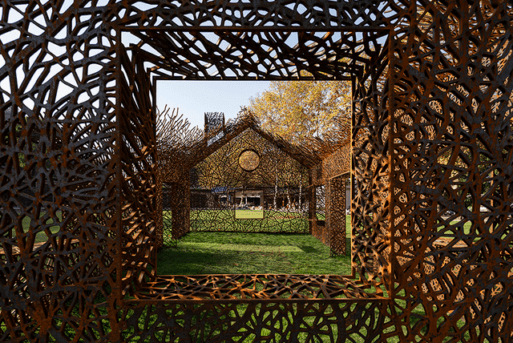
Credit: Jin Weiqi / Designboom
Chinese designer Hu Quanchun has found a unique way to depict the loss of family, home, and place in his sculpture, “Vanished House.” The sculpture is a memorial installation, set in a cemetery in Wuhan, China. It consists of permeable, ivy-covered walls, open windows, and a roof with a gaping hole – all laser-cut from Corten steel.
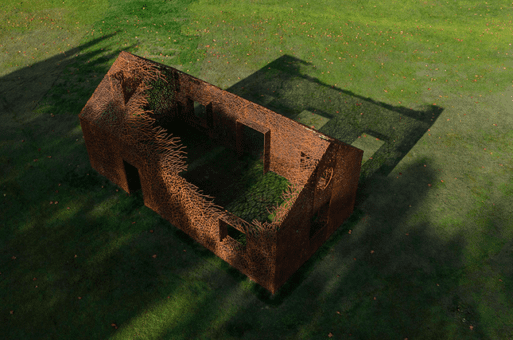
The “Vanished House” from above, revealing a gaping hole in its roof.
Credit: Jin Weiqi / Designboom
According to Designboom, Quanchun and his team at Field Conforming Studios intentionally chose to depict the “Vanished House” in a straightforward manner, similar to a child’s drawing, to convey simplicity. In contrast, the ivy was designed to reveal a sense of craft and sophistication. Initially hand-drawn on a miniature of the final piece, the ivy was painstakingly created to mimic the look of a living plant.
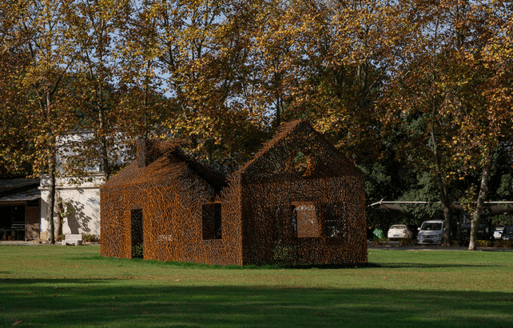
The “Vanished House” was created for Wuhan’s East Lake International Ecological Sculpture Biennale in 2021.
Credit: Jin Weiqi / Designboom
Corten steel naturally rusts to a crimson color – suggesting the natural state of ivy leaves in fall. At times, the “Vanished House” practically blends in with the autumn leaves behind it. Over time, as it is exposed to the elements, the steel structure is expected to darken and become increasingly prominent.
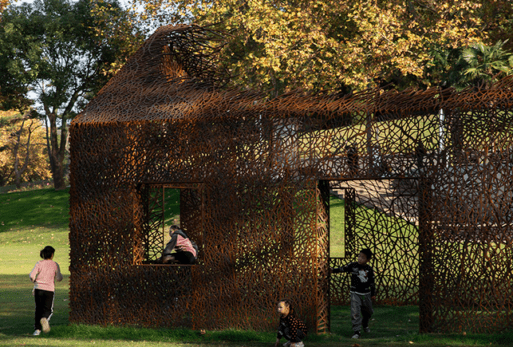
The “Vanished House” sits in Wuhan Shimenfeng Memorial Park.
Credit: Jin Weiqi / Designboom
By evoking both a sense of place and loss, Quanchun’s sculpture allows mourners to move beyond the flattened nature of the common cemetery experience; to embrace the depth and breadth of what is gone. Children play amongt its open walls and windows, suggesting that the structures of the past, while gone, can still offer hope for the future. The vines reaching towards the skies reinforce the feeling of possibility and rebirth.
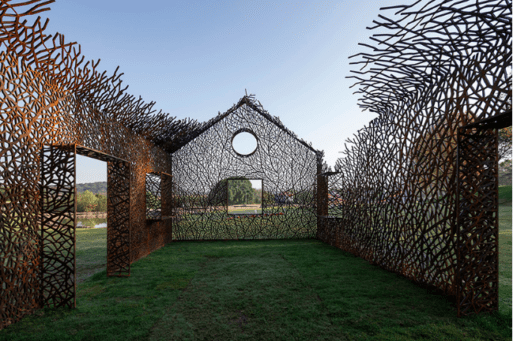
Ivy tendrils reach grow into space, reaching up to the future.
Credit: Jin Weiqi / Designboom

 “Vanished House” by Hu Quanchun
“Vanished House” by Hu Quanchun


 “As Tears Go By” by Marianne Faithfull
“As Tears Go By” by Marianne Faithfull

 Funeral Favors Offer Visitors a Tangible Memento
Funeral Favors Offer Visitors a Tangible Memento















